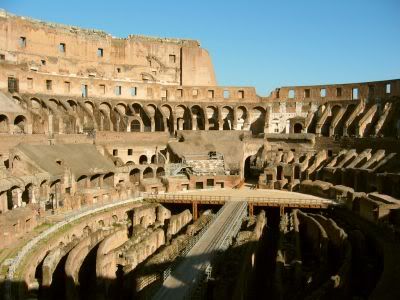
The Colosseum, originally known as the Flavian Amphitheater, is an amphitheater in Rome, capable of seating 50,000 spectators. It has hosted large-scale spectacular games that included fights between animals (venationes), the killing of prisoners by animals and other executions (noxii), naval battles (naumachiae, via flooding the arena), and combats between gladiators (munera). It has been estimated that about 500,000 people died in the Colosseum games.
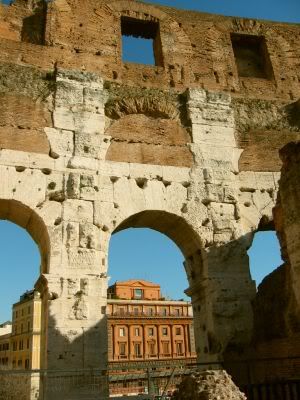
There were eighty arches on every floor. The arches are 4.20 metres wide and 7.05 metres high on the ground floor, while on the upper floors they are only 6.45 metres high. Travertine, a white concretionary form of calcium carbonate that is usually hard and semicrystalline, was used largely in the construction of the Colosseum.
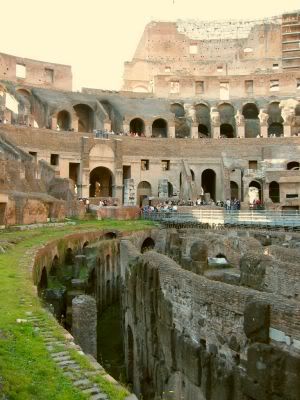
The Colosseum measured 48 metres high, 188 metres long, and 156 metres wide. The wooden arena floor was 86 metres by 54 metres, and covered by sand. Underneath the arena was the hypogeum (literally, 'underground'), a network of tunnels and cages where gladiators and animals were held before contests began.
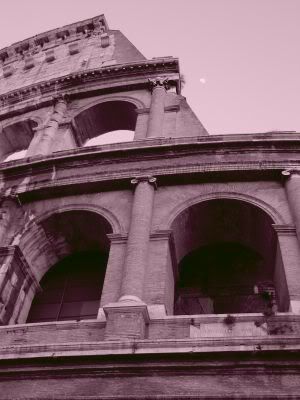
According to tradition, Rome was founded on April 21st, 753 BC, by Romulus, who later killed his twin brother Remus in the process. Romulus and Remus were allegedly sons of the god Mars and the priestess Rhea Silvia, daughter of the King of Albalonga. The boys were abandoned to save them from the hate of Amulius, a pretender to Albalonga's throne, and taken care of by a she-wolf, even today one of the symbols of Rome.
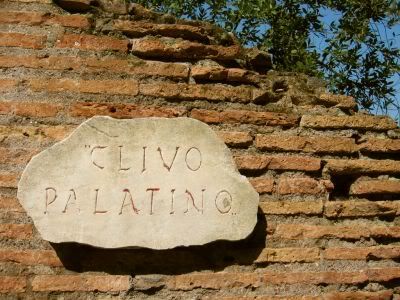
The Palatine Hill is the centermost of the seven hills of Rome and is one of the most ancient parts of the city. According to Roman mythology, the Palatine Hill was where Romulus and Remus were found by the she-wolf that kept them alive.
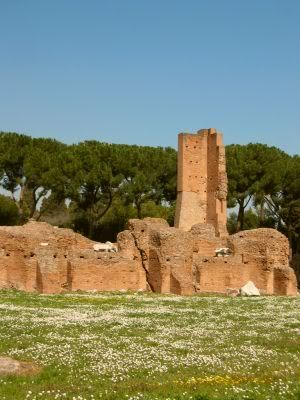
The emperors of Rome built their palaces on the Palatine. The ruins of the palaces of Augustus, Tiberius and Diocletianus are still to be seen. Caesar Augustus was the first Roman Emperor and is traditionally considered the greatest.
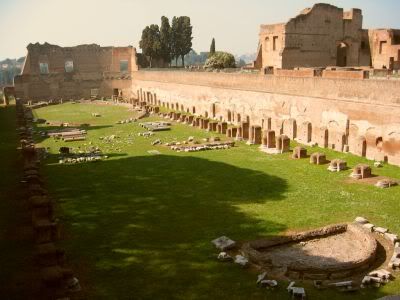
Titus Flavius Domitianus (24 October 51 – 18 September 96), commonly known as Domitian, was a Roman emperor during the Flavin Dynasty. Domitian's greatest passions were the arts and the games. He finished the Colosseum, started by his father, and implemented the Capitoline Games in 86. Above was part of the emperor's palace, an open area known as the Stadium of Domitian, arguably a private place where hunts, games and fights were held for the emperor.
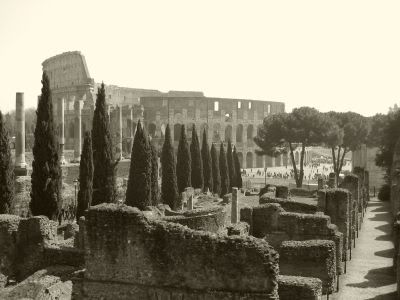
The Colosseum, as seen from the Palatine Hill.

The ruins of Palatine Hill are now more confusing than those of the forum. But its views, lovely gardens, shady orange groves, and peaceful corners make this a wonderful area in which to take a break from sightseeing.
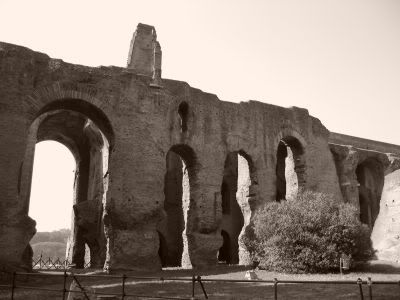
Beyond the walls, at the foot of the Palatine Hill lies the remains of the Circus Maximus, where thousands of imperial chariot races once took place. Very little now remains of the Circus, except for the now grass-covered racing track.
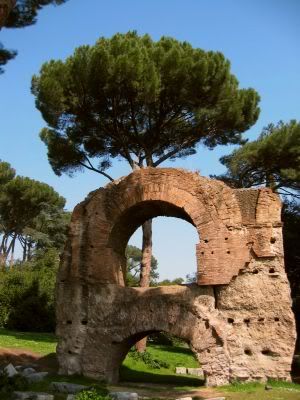
A Colosseum or Palatine Hill entrance ticket will get you into both site.
Price : Euro 10.00 (plus 3.50 for English guide)
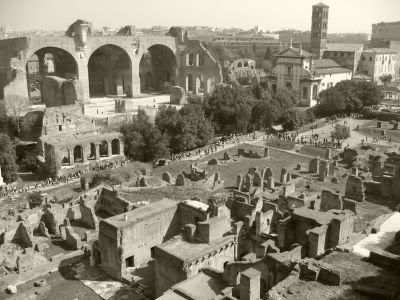
Palatine Hill is some 70 meters high, overlooks the Roman Forum. The Basilica of Maxentius or the Basilica of Constantine (top left) was the last of the great civilian basilicas on the forum. The vast trio of vaults make up one of the forum's most impressive sights.
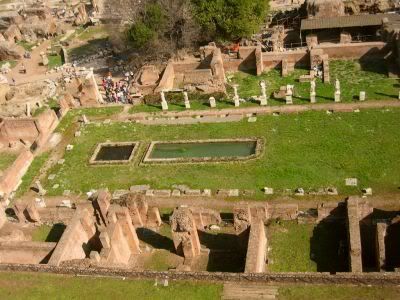
For almost a thousand years, the Roman Forum was the heart of ancient Rome, in which commerce, business, trading and the administration of justice took place.
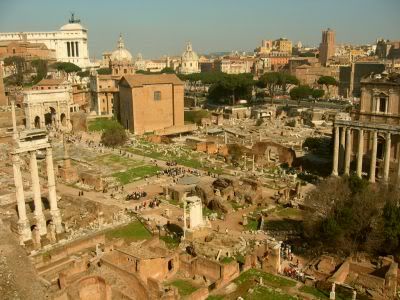
Today, all that remains is a jumble of romantic ruins. Altered and rebuilt over many centuries, its monument - one superimposed on another - are often confusing. You probably need a great deal of imagination to make full sense of the ruins.

The Basilica Julia was built by Julius Caesar as a part of his reorganisation of the forum. Very little of the building remains now, although the basic floor plan can be seen. The function of the basilica was to house tribunals and other activities from the forum when weather didn't permit outdoor meetings.
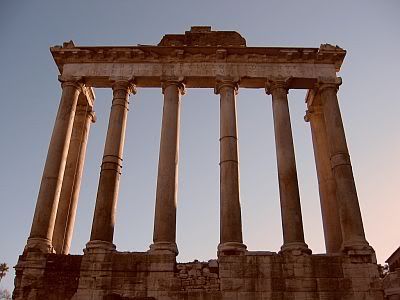
The Temple of Saturn is the oldest and most venerated temple in the forum. It was dedicated to Saturn, god of agriculture. Rome's early power having been deemed to stem from its agricultural prowess.
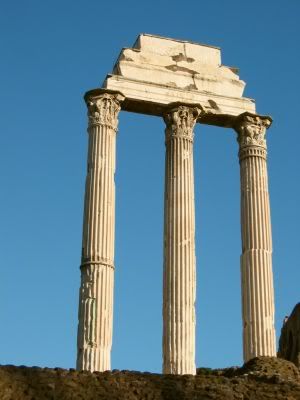
The foundation of the Temple of Castor and Pollux is closely related to an ancient myth, erected in honor of Castor and Pollux, the twin sons of Jupiter. As many other buildings on the forum, the temple has suffered destruction. Today only three columns and a piece of the architrave remain.

The Temple of Antoninus and Faustina was built by the emperor Antoninus Pius shortly after the death of his beloved wife Faustina. After the death of Antoninus Pius the dedication was change to both Antoninus and Faustina. The temple is one of the forum's best preserved, largely because it was converted in the 11th century to the church of San Lorenzo.
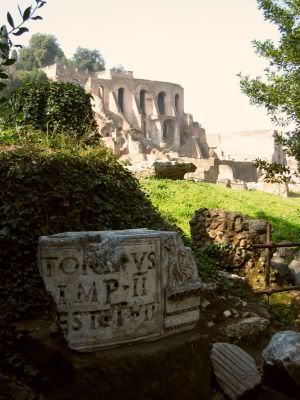
The Roman Forum suffered damage and destruction repeatedly. After Rome's fall, time began to take its toll. Fire had ravaged the site in the 3rd century, followed by earthquakes and the assaults of barbarian invaders in the 5th century. During the Middle Ages, stone was pillaged for churches and palaces. The forum was so reduced that it was left to shepherds and their animals.
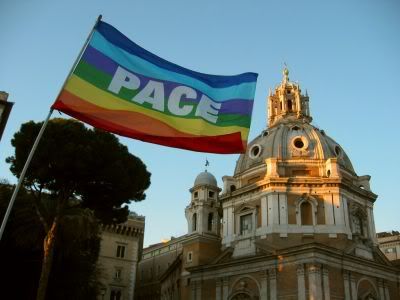
On Saturday, March 19th, 2005, Rome saw the starting of an anti-war demonstration. I was there. It was my first time attending a protest.
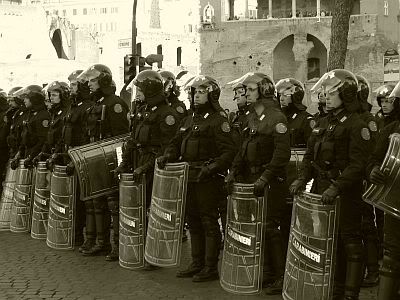
But, on March 23rd between two and three million people converged the city to protest the policies of the Berlusconi government in the biggest demonstration in the history of post-war Italy. The protest was jointly organised by trade unions, anti-globalisation groups and parties of the official Italian left.
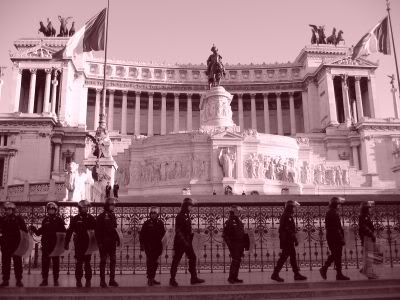
The government deployed large numbers of police to protect government and official buildings. Monumento A Vittorio Emanuele II, known locally as the 'typewriter building', is a shrine to Italian unification.
Note : Berlusconi had been under pressure to resign since a stinging defeat in regional elections earlier this month. His resignation will end Italy's longest-serving government since World War II.

No comments:
Post a Comment